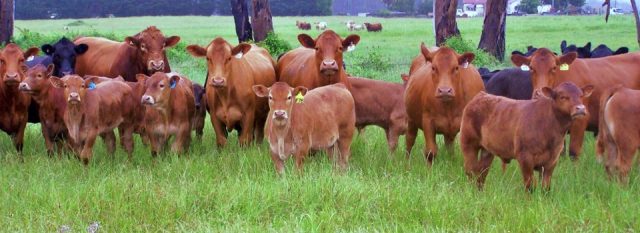Type the name of the breed you're looking for below
[wpdreams_ajaxsearchlite] Don't see the breed your're looking for? Click here and let us know!
Gelbvieh cattle
| Place of Origin | Germany |
| Origin | In the mid-19th century, several breeds of local German cattle began to be combined into what would eventually be the Gelbvieh. The new breed was officially formed by 1920. Gelbvieh have been introduced to several countries around the world, including Spain, Portugal, Great Britain, Canada, the United States, Australia, and South Africa, primarily through the use of artificial insemination and some live export. The first Gelbvieh genetics reached Canada in 1972 from Germany. Gelbvieh are currently the 6th largest beef breed in Canada with 3500 head registered yearly. The first Gelbvieh cattle were imported to the United States from Germany in 1971 by Leness Hall. Also, the Kicking Horse Ranch of Montana has played a major role in the Gelbvieh market in the United States. The American Gelbvieh Association was formed the same year. There are currently 45,000 registered Gelbvieh cows in the United States. In January 1977, the first American National Gelbvieh Show was held in conjunction with the National Western Stock Show in Denver, Colorado |
| Purpose | Meat |
| Appearance | Gelbvieh literally means "yellow cattle" in German, and the breed originated as golden brown cattle with dark hooves and full body pigmentation. Through selective breeding, black genetics are now also prevalent in the breed. Gelbvieh cattle are known for their high rate of gain and feed efficiency, and were originally selected for easy growth, quick maturity, length of loin, leanness, docility, and longevity. They are able to adapt to many different rangelands and climate conditions. Gelbvieh females were selected to be very maternal with strong fertility, mothering instincts, good udders, and strong milk production. They are also known to have smaller bodied offspring, allowing for ease of calving. |
| Horns | Either horned or polled (hornless) |
| Other Considerations | Medium to large breed of cattle. Full blood Gelbvieh cattle are direct descendants of those registered in the German herdbook and originally imported to Canada and the United States. Purebred Gelbvieh have been bred using outside genetics for certain breed improvements, but both males and females must remain 88% Gelbvieh.. Those animals that are less than 88% Gelbvieh are known as percentage Gelbvieh. |



